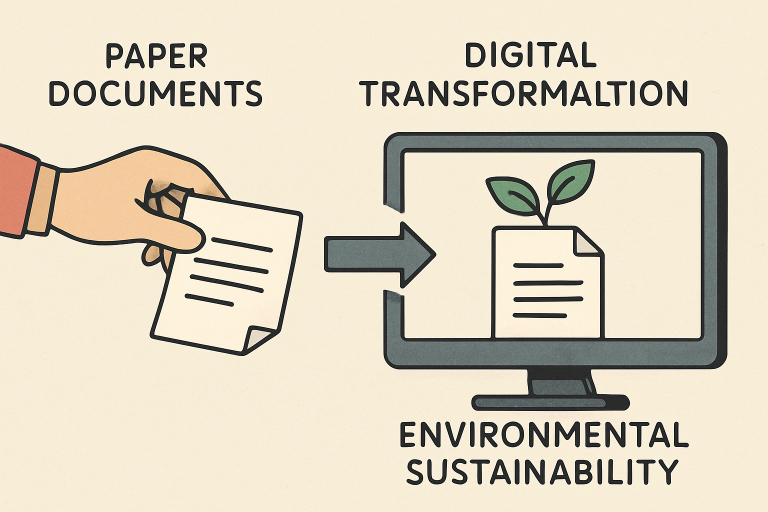
As the world pivots towards environmentally conscious business practices, the quest for efficiency and sustainability has reached every corner of the modern office. One of the most impactful yet approachable shifts lies in how organizations manage their documents. Transitioning from paper-based to digital processes isn’t merely a technological upgrade — it’s a crucial component in the movement toward a more sustainable and responsible future. Businesses that modernize their document workflows not only reduce paper waste but also unlock enhanced security, operational agility, and lower energy consumption. This shift is seamless when supported by partners who specialize in secure document shredding Quincy MA, enabling organizations to responsibly dispose of sensitive documents while supporting their ongoing digital transformation.
Adopting sustainable document management strategies not only conserves natural resources but also helps organizations comply with evolving data security regulations, reduce costs, and foster a culture of environmental responsibility. Digital solutions offer rapid document retrieval, streamlined collaboration, and a tangible reduction in physical storage requirements, making them an essential component of any forward-thinking company’s sustainability plan. Organizations’ environmental impact can be further minimized with strategic document disposal and digital upgrades, contributing to both corporate responsibility and a healthier planet.
Benefits of Digital Document Management
Digital document management revolutionizes business operations by providing a host of operational and environmental benefits:
- Reduced Paper Consumption: Offices are notorious for generating excessive paper waste, with the average employee using nearly 10,000 sheets of paper annually. By digitizing records, businesses significantly reduce their environmental footprint, resulting in substantial conservation of trees and water resources.
- Lower Carbon Footprint: From forest to delivery, the production and shipment of paper require substantial energy. Digital storage and workflows significantly reduce this, enabling businesses to meet their carbon reduction goals.
- Resource Conservation: With digital documents, the need for archival cabinets, expansive office space, and energy-intensive climate control is reduced, resulting in less physical infrastructure and lower energy demand.
Implementing Paperless Workflows
Adopting paperless workflows is the cornerstone of sustainable document management, but change requires a targeted approach:
- Assess Current Processes: Map out all processes that currently rely on paper and target those with the highest volume or risk potential for digitization.
- Choose Appropriate Tools: Select digital document management systems (DMS) that align with your operational framework and ensure they integrate seamlessly with your existing tools, minimizing disruptions during adoption.
- Train Employees: Success hinges on staff adoption. Comprehensive training programs ensure users understand the systems and recognize how these tools benefit daily work and the environment.
- Monitor and Adjust: Continuously gather feedback, analyze workflow success, and make iterative improvements to maintain robust and relevant digital adoption.

Leveraging Cloud-Based Solutions
Cloud-based platforms offer transformative sustainability advantages. Major providers, such as Microsoft and Google, operate energy-efficient data centers and often utilize renewable energy sources, resulting in a lower total lifecycle energy impact compared to in-house management.
- Energy Efficiency: Certified cloud data centers can use up to 50% less energy than traditional on-site IT infrastructure.
- Scalability: Quickly ramp up or down according to business demand while avoiding wasteful over-provisioning.
- Remote Accessibility: Global, flexible access supports hybrid and remote teams, minimizing commuting and reducing organizations’ transportation emissions.
Integrating AI for Efficiency
Artificial Intelligence supercharges document management, enabling unprecedented automation and efficiency:
- Automating Repetitive Tasks: AI handles data entry, sorting, and even compliance checks, freeing staff to focus on higher-value tasks.
- Improving Accuracy: Advanced algorithms reduce the risk of human error in document processing, resulting in cleaner and more reliable records.
- Enhancing Search Capabilities: AI-powered search features dramatically speed up information retrieval, reducing resource use and staff frustration.
Ensuring Data Security and Compliance
As document management shifts online, security and regulatory compliance are more important than ever:
- Implement robust security measures, including encryption, tiered access controls, and multifactor authentication, to keep sensitive information protected from internal and external threats.
- Regular Audits: Scheduled checks and system audits help maintain regulatory compliance in sectors prone to scrutiny, such as healthcare and finance.
- Employee Training: Ongoing education ensures that all staff understand their role in maintaining security and compliance, even in a digital environment.
Measuring Sustainability Impact
It’s crucial to track progress and prove the value of sustainability initiatives:
- Track Paper Usage: Baseline and ongoing paper usage statistics highlight reductions, reinforcing the value of transitioning to digital.
- Assess Energy Consumption: Compare utility costs and consumption data from physical and digital systems to demonstrate direct savings.
- Gather Employee Feedback: Regular surveys and suggestion boxes encourage employee buy-in and can identify opportunities for improvement.
Overcoming Challenges in Digital Transformation
While the path to digital and sustainable document management offers many rewards, it’s not without obstacles:
- Resistance to Change: Transparent communication, coupled with clear demonstrations of environmental and workflow benefits, helps overcome skepticism.
- Integration Issues: Investing in interoperable software and IT support ensures new digital platforms work smoothly with legacy systems.
- Cost Considerations: Framing initial investments as long-term savings and environmental wins secures stakeholder buy-in.
Conclusion
Embracing sustainable document management strategies is a tangible way for organizations to shrink their environmental impact while gaining operational advantages. Through reduced reliance on paper, adoption of cloud and AI technologies, and diligent data governance, companies carve out a future that balances profitability with responsibility. These efforts not only set businesses apart as leaders in efficiency and environmental mindfulness but also contribute to a cleaner, greener world for all.

